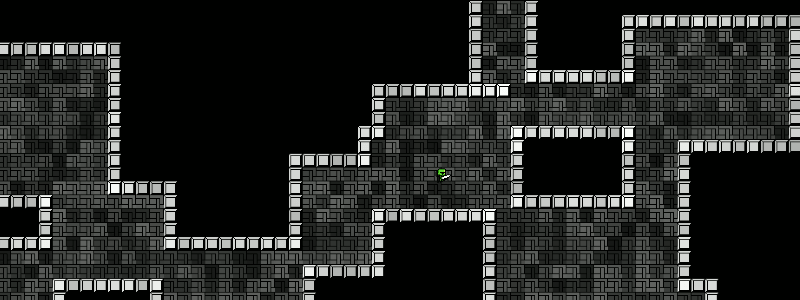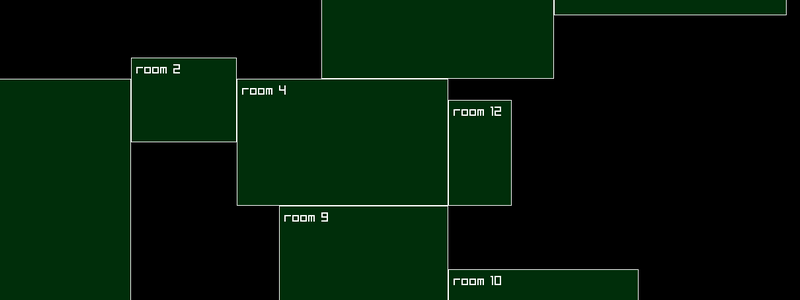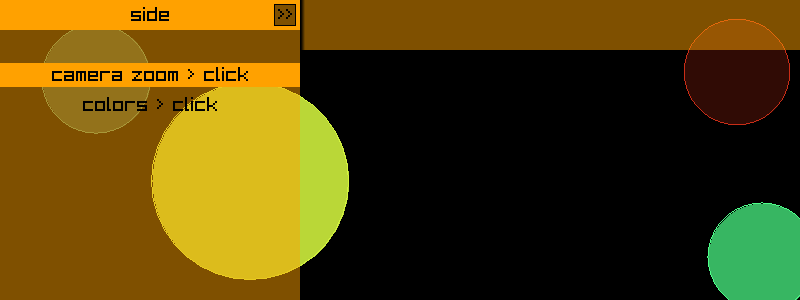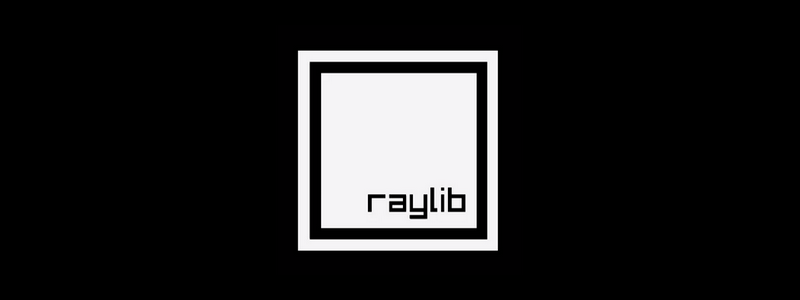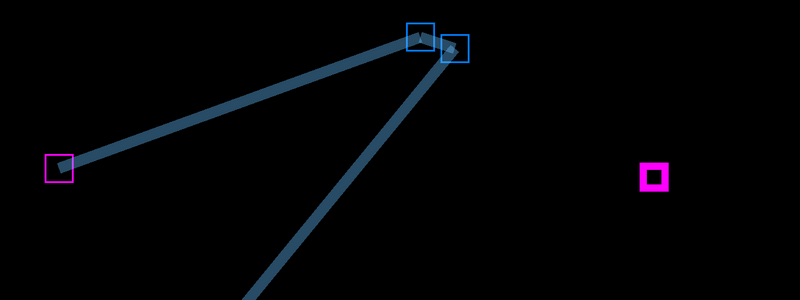Pixel Noise (Screen Artifacts) > 2D
Contents
Simulated pixel noise / screen artifacts
Simulates pixel noise, or old movie-type screen artifacts, with color and size change. To complete this example you will need to download the Go gopher image here. UP arrow key to change pixel noise color, DOWN arrow key to change background color and RIGHT/LEFT arrow keys to increase/decrease pixel noise size . View on Github
Before you start
I am a self taught Go programmer and do it as a hobby, the code below is my own interpretation of how to do something, probably not the only way or the best way. This is intended as a resource to learn some basic Raylib and Go game dev skills. If you want to use any of the code anywhere else, feel free to do so.
Code
package main
import (
"math/rand"
rl "github.com/gen2brain/raylib-go/raylib"
)
/* MORE RAYLIB GO EXAMPLES ARE AVAILABLE HERE:
https://github.com/unklnik/raylib-go-more-examples
*/
var (
cnt rl.Vector2 //SCREEN CENTER
noiseColor = rl.Black //INITIAL PIXEL REC COLOR
backColor = rl.White //INITIAL BACKGROUND COLOR
backRec rl.Rectangle //RECTANGLE FOR THE BACKGROUND COLOR
noiseLevel = float32(4) //INITIAL MAX SIZE LIMIT USED TO GENERATE RANDOM PIXEL NOISE REC
noiseMax = float32(10) //MAX SIZE LIMIT OF PIXEL NOISE REC
noiseMin = float32(2) //MIN SIZE LIMIT OF PIXEL NOISE REC
)
func main() {
rl.InitWindow(0, 0, "pixel noise - raylib go - https://github.com/unklnik/raylib-go-more-examples")
scrW, scrH := rl.GetScreenWidth(), rl.GetScreenHeight() // GET SCREEN SIZES
rl.SetWindowSize(scrW, scrH) // SET WINDOW SIZE
//rl.ToggleFullscreen() // UNCOMMENT IF YOU HAVE DISPLAY ISSUES WITH OVERLAPPING WINDOW BARS
cnt = rl.NewVector2(float32(scrW/2), float32(scrH/2)) //DEFINE SCREEN CENTER
camera := rl.Camera2D{} // DEFINES THE CAMERA
camera.Zoom = 1.0 //SETS CAMERA ZOOM
texture := rl.LoadTexture("gopher.png") //LOAD GOPHER IMAGE
backRec = rl.NewRectangle(0, 0, float32(scrW), float32(scrH)) //DEFINE BACKGROUND RECTANGLE
rl.SetTargetFPS(60) // NUMBER OF FRAMES DRAWN IN A SECOND
for !rl.WindowShouldClose() {
if rl.IsKeyDown(rl.KeyLeft) { //DECREASE SIZE LIMIT USED TO GENERATE RANDOM PIXEL REC
if noiseLevel > noiseMin {
noiseLevel -= 0.05
}
} else if rl.IsKeyDown(rl.KeyRight) { //INCREASE SIZE LIMIT USED TO GENERATE RANDOM PIXEL REC
if noiseLevel < noiseMax {
noiseLevel += 0.05
}
}
if rl.IsKeyPressed(rl.KeyUp) { //SWITCH COLORS PIXEL NOISE
if noiseColor == rl.Black {
noiseColor = rl.Red
} else if noiseColor == rl.Red {
noiseColor = rl.Green
} else if noiseColor == rl.Green {
noiseColor = rl.SkyBlue
} else if noiseColor == rl.SkyBlue {
noiseColor = rl.Magenta
} else if noiseColor == rl.Magenta {
noiseColor = rl.White
} else if noiseColor == rl.White {
noiseColor = rl.Black
}
}
if rl.IsKeyPressed(rl.KeyDown) { //SWITCH COLORS BACKGROUND COLOR
if backColor == rl.Black {
backColor = rl.Red
} else if backColor == rl.Red {
backColor = rl.Green
} else if backColor == rl.Green {
backColor = rl.SkyBlue
} else if backColor == rl.SkyBlue {
backColor = rl.Magenta
} else if backColor == rl.Magenta {
backColor = rl.White
} else if backColor == rl.White {
backColor = rl.Black
}
}
rl.BeginDrawing()
rl.ClearBackground(rl.RayWhite)
rl.BeginMode2D(camera)
rl.DrawRectangleRec(backRec, backColor) //DRAW BACKGROUND RECTANGLE
//DRAW GOPHER IMAGE
rl.DrawTexture(texture, int32(cnt.X)-texture.Width/2, int32(cnt.Y)-texture.Height/2, rl.White)
rl.EndMode2D()
//DRAW PIXELS OUTSIDE OF CAMERA MODE 2D THEREFORE WILL DISPLAY THE SAME ON ZOOM CHANGE
num := 100 //NUMBER OF PIXEL NOISE RECS TO DRAW PER FRAME
for num > 0 {
size := rF32(1, noiseLevel) // RANDOM REC SIZE RF32 FUNCTION BELOW
//DEFINE REC
rec := rl.NewRectangle(rF32(0, float32(scrW)), rF32(0, float32(scrH)), size, size)
rl.DrawRectangleRec(rec, noiseColor) //DRAW RECTANGLE
num--
}
rl.DrawText("UP ARROW KEY CHANGE PIXEL NOISE COLOR", 8, 12, 20, rl.White)
rl.DrawText("UP ARROW KEY CHANGE PIXEL NOISE COLOR", 9, 11, 20, rl.Black)
rl.DrawText("UP ARROW KEY CHANGE PIXEL NOISE COLOR", 10, 10, 20, rl.Blue)
rl.DrawText("DOWN ARROW KEY CHANGE BACKGROUND COLOR", 8, 42, 20, rl.White)
rl.DrawText("DOWN ARROW KEY CHANGE BACKGROUND COLOR", 9, 41, 20, rl.Black)
rl.DrawText("DOWN ARROW KEY CHANGE BACKGROUND COLOR", 10, 40, 20, rl.Blue)
rl.DrawText("RIGHT LEFT ARROW KEYS INCREASE DECREASE SIZE", 8, 72, 20, rl.White)
rl.DrawText("RIGHT LEFT ARROW KEYS INCREASE DECREASE SIZE", 9, 71, 20, rl.Black)
rl.DrawText("RIGHT LEFT ARROW KEYS INCREASE DECREASE SIZE", 10, 70, 20, rl.Blue)
rl.EndDrawing()
}
rl.UnloadTexture(texture) //UNLOAD FROM MEMORY
rl.CloseWindow()
}
// RETURNS A RANDOM FLOAT32 VALUE BETWEEN MIN/MAX RANGE
func rF32(min, max float32) float32 {
min2 := float64(min)
max2 := float64(max)
return float32(min2 + rand.Float64()*(max2-min2))
}
Video
Want to give it a Go?
To start making games with Go and Raylib you will need:
- Go - https://go.dev/
- TDM-GCC - https://jmeubank.github.io/tdm-gcc/
- Git - https://git-scm.com/downloads
- Go Bindings for Raylib - https://github.com/gen2brain/raylib-go
- Visual Studio Code - https://code.visualstudio.com/
You can, of course, use other code editors however VS Code is my own personal preference

